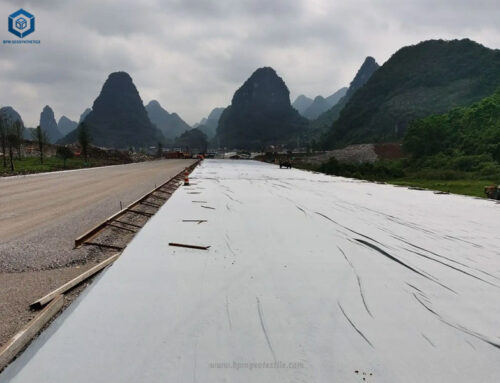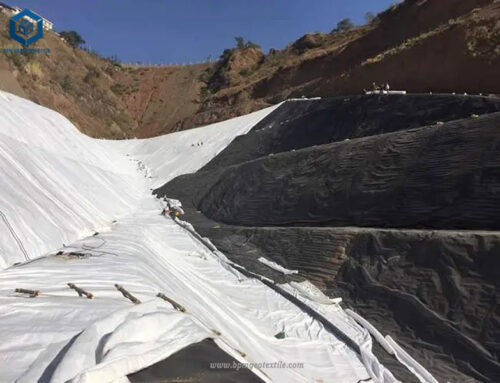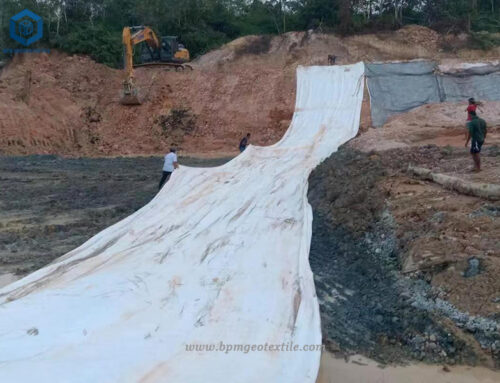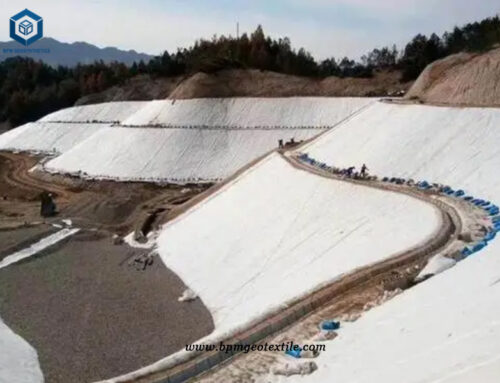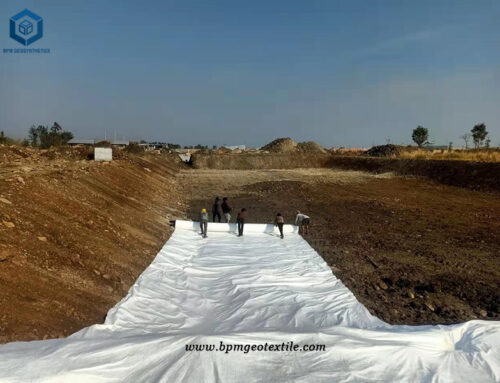The term “Short Fiber Needle Punched Geotextile Fabric” refers to a type of geotextile fabric made from short fibers. It is also known as short fabric geotextile fiber. BPM short fabric geotextile fiber is typically manufactured using polypropylene or polyester fibers. These fibers undergo processes such as weaving, needle-punching, or heat bonding to create the fabric.
The short fiber needle punched geotextile fabric offered by BPM is specifically made from 100% virgin staple polypropylene fibers. These fibers are intricately tangled and interlocked with each other through the needle-punching process. The resulting geotextile fabric exhibits excellent qualities for various applications. It is commonly utilized for tasks such as separation, filtration, reinforcement, stabilization, protection, soil retention, and drainage.
Our geotextiles find widespread use in different industries and projects where they serve to enhance the overall performance and longevity of the soil and surrounding structures.
1. What Is Short Fabric Geotextile Fiber ?
Short fabric geotextile fiber, alternatively known as short fiber needle-punched geotextile fabric, is a geotextile material that is manufactured using short fibers. These fibers are typically made from polypropylene or polyester. The manufacturing process involves techniques such as weaving, needle-punching, or heat bonding, which join the short fibers together to form a fabric structure.
Short fabric geotextile fiber is specifically made from 100% virgin staple polypropylene fibers, which undergo the needle-punching process. This process intertwines and locks the fibers together, creating a cohesive fabric. This fabric possesses excellent properties suitable for various geotechnical applications.
The primary purpose of short fabric geotextile fiber is to provide reinforcement, separation, filtration, stabilization, protection, soil retention, and drainage functions in civil engineering and environmental projects. It finds wide usage in applications such as road construction, erosion control, retaining walls, landfills, drainage systems, and more. By utilizing short fabric geotextile fiber, the performance, durability, and overall integrity of soil structures are improved, ensuring long-term stability and protection.
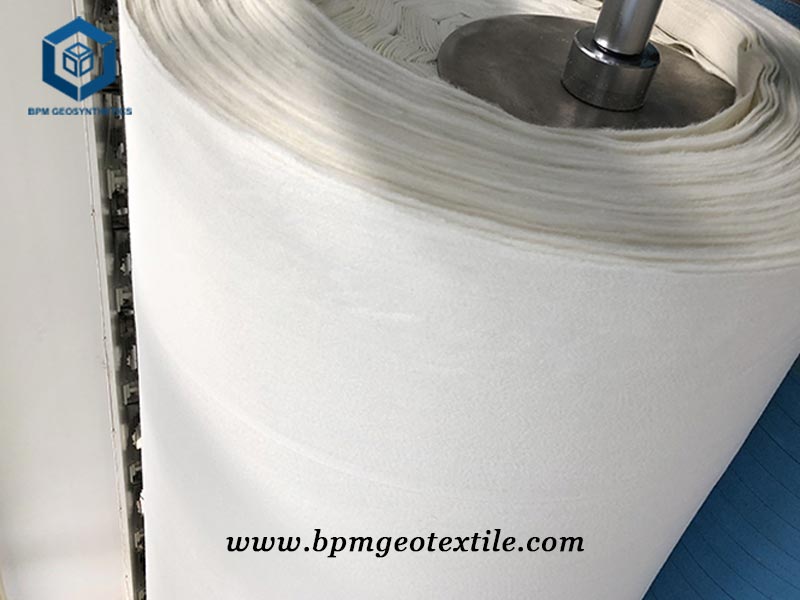
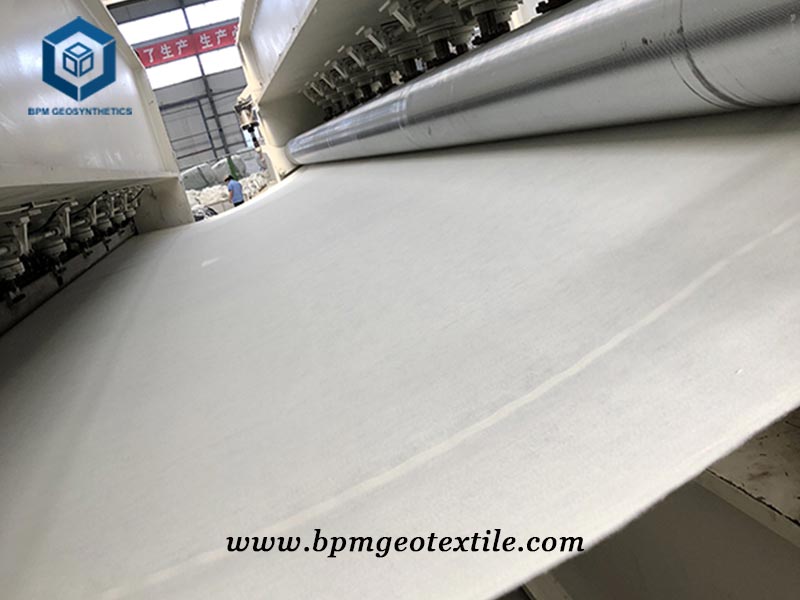
2. What Is Short Fabric Geotextile Fiber Used for ?
Short fabric geotextile fiber, or short fiber needle-punched geotextile fabric, has a wide range of applications in civil engineering and environmental projects. Here are some common uses:
2.1 Separation
It is used to create a barrier between different soil layers, preventing mixing and maintaining their individual characteristics.
2.2 Filtration
Geotextile fabric acts as a filter, allowing water to pass through while preventing the movement of fine particles. It is used in drainage systems to ensure proper water flow and prevent clogging.
2.3 Reinforcement
By improving the tensile strength of soil, geotextile fabric enhances the stability and load-bearing capacity of structures such as roads and embankments.
2.4 Stabilization
It provides stability to slopes, preventing erosion and maintaining the integrity of the soil structure.
2.5 Protection
Geotextile fabric protects underlying materials from damage caused by sharp objects or abrasion. It acts as a protective layer for geomembranes, liners, and other vulnerable components.
3. What Are Benefits of Short Fabric Geotextile Fiber for Road Construction ?
Short fabric geotextile fiber provides several advantages when applied in road construction projects.
3.1 Enhanced Soil Separation and Stability
By acting as a barrier between different soil types, geotextile fabric prevents their mixing, ensuring each layer retains its unique properties. This promotes improved stability and minimizes issues like differential settlement, leading to a more durable road structure.
3.2 Efficient Filtration and Drainage
Geotextile fabric’s permeable nature enables water to pass through while effectively filtering out fine particles. This facilitates proper drainage, preventing the accumulation of water and potential damage to the road system. It ensures efficient water management and preserves the integrity of the roadbed.
3.3 Reinforced Load-Bearing Capacity
Through its reinforcement capabilities, short fabric geotextile fiber strengthens the road structure’s tensile strength and load-bearing capacity. It evenly distributes loads, reducing stress on the underlying soil and enhancing the road’s overall stability and longevity.
3.4 Erosion Mitigation
Geotextile fabric serves as an erosion control measure, particularly on road embankments and slopes. It stabilizes the soil, prevents surface runoff, and mitigates erosion caused by rainfall and water flow. This safeguards the road’s structural integrity and minimizes the need for frequent maintenance.
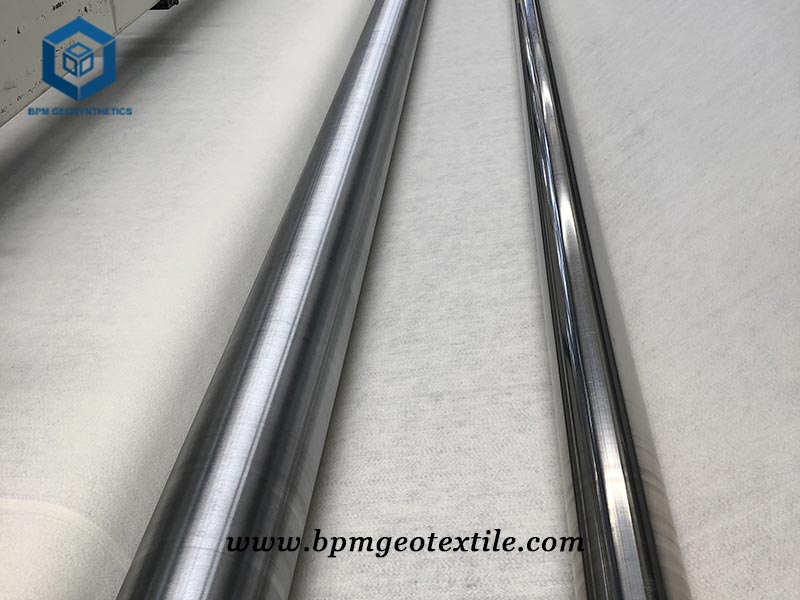
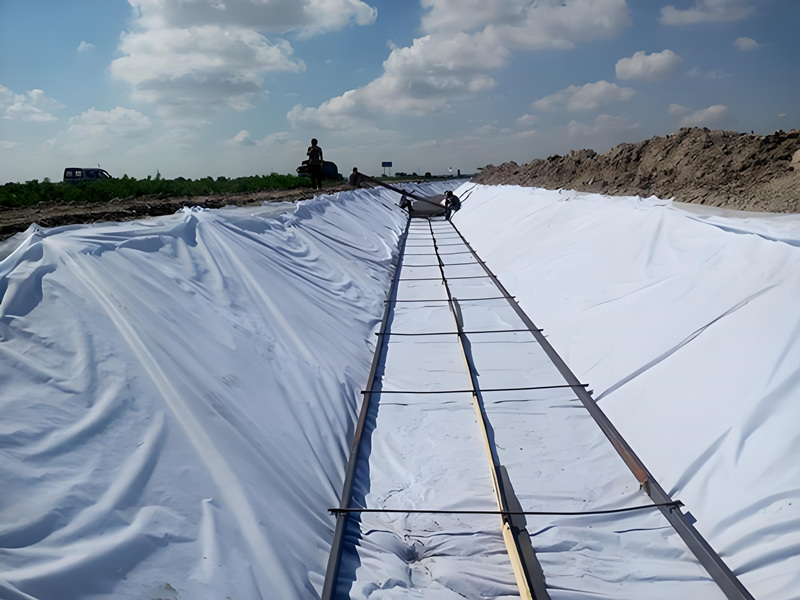
4. Case Study of Short Fabric Geotextile Fiber for Road Construction
A rural road in an area with challenging soil conditions required rehabilitation due to frequent rutting, inadequate drainage, and erosion issues. The road was prone to damage from heavy rainfall and lacked the necessary stability for consistent traffic flow. The project aimed to improve the road’s durability, enhance drainage, and minimize maintenance requirements.
In the road rehabilitation project, the use of short fabric geotextile fiber was identified as a crucial solution. The selected geotextile fabric possessed high tensile strength, excellent filtration properties, and a proven track record in similar soil conditions.
Enhanced Stability: Improved road stability, reduced rutting, and pavement deformations.
Improved Drainage: Efficient water drainage, minimizing water accumulation and enhancing resilience during heavy rainfall.
Erosion Control: Stabilized soil, preventing erosion along embankments and slopes, ensuring road integrity.
Long-Term Cost Savings: Reduced excavation and maintenance needs, resulting in cost savings during construction and for the road authority in the long run.
The application of short fabric geotextile fiber in the rehabilitation of the rural road proved to be an effective solution, providing enhanced stability, improved drainage, erosion control, and long-term cost savings. The geotextile fabric successfully addressed the road’s soil challenges, resulting in a durable infrastructure capable of withstanding heavy traffic and adverse weather conditions.
5. Summary
BPM Geotextile had provided many types of effective and states of the art geotextile, geomembranes, and other geosynthetics to over 100 countries. Our geosynthetic products are widely used across a variety of industries including waste containment, water containment, aquaculture, industrial project, energy project and mining projects, etc. Our main customers are from Australia, France, Sweden, UK, Hungary, New Zealand, Poland, Mexico, Ecuador, Brazil, Pakistan, Bangladesh, Thailand, Vietnam, Malaysia, Indonesia, Singapore, Philippines, Sri Lanka, India, UAE, Saudi Arabia, Qatar, Kenya, etc.
BPM Geotextile is also providing professional design and installation service. OEM and ODM are also available.
Hope to be your partner.

